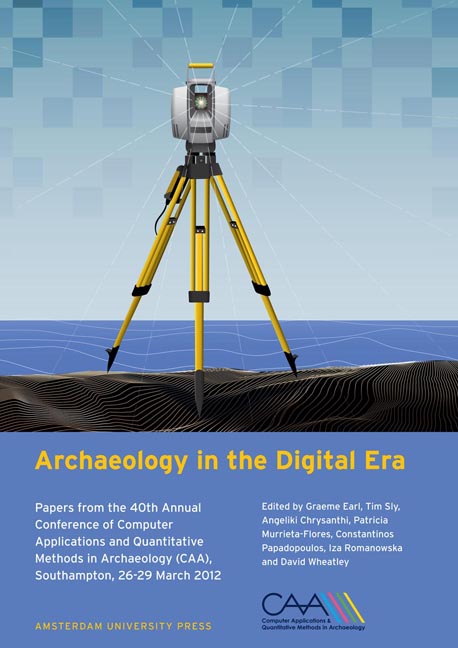 Archaeology in the Digital Era
Archaeology in the Digital Era Matera Città Narrata Project: a Multimedia and Multi-Platform Guide for Mobile Systems
Summary
Abstract:
The aim of Matera Città Narrata (Matera Tales of a City) project is the creation of a digital platform able to support the public before and during the visit of Matera (South Italy, Basilicata Region, Unesco World Heritage since 1993), through the access to cultural contents both in remote and on mobile devices, on and offline, while attending places, sites, itineraries. Several contents have been developed: 3D reconstructions of the city and of its landscape in eight chronological phases, movies, multimedia, virtual reality environments, audio guides, declined according to different communicative formats implemented for different and multi-platform devices. Matera Città Narrata is not a descriptive traditional guide inspecting monuments and mentioning who made them and when. On the contrary it tells the stories that took place in those ancient sites, real fragments of life, myths, events, characters, memories, times.
Keywords:
Mobile Technologies, Storytelling, Usability, 3D Reconstructions, Intangible Heritage
Discovering a World Heritage Rupestrian Site Through the Use of Mobile Technologies
Matera Città Narrata project has been realized in 2009-2011 by CNR ITABC and it was supported by the Regional Promotion Agency (APT) and the Basilicata Regional Government. Its aim is to provide the tourists visiting the city with cultural contents related to the places, the history and the intangible heritage in order to enhance their cultural experience and encourage them to remain and spend a longer time in this wonderful city and in the surrounding landscape.
Matera seems, or better is, an enormous sculpture, a city modeled in the calcareous rock of the deep canyon called Gravina, where thousands of natural caves have been used by men and women to find protection and organize their life, from 12.000 years ago until now (Fonseca et al. 1999). The territory in fact is plenty of rupestrian sites: prehistorical settlements (paleolithic and neolithic age) rupestrian churches, caves used as houses, pastoral villages excavated in the calcareous rock, jazzo's (spaces destined to animals and surrounded by a dry stone wall), medieval manor farms, rupestrian monasteries.
During the Neolithic Age (around 8000 -5000 B.C) man did not live in the grottos. After the discovery of the agriculture, he began to live in fortified and sheltered villages encircled by moats that had the function to isolate and protect the group of primitive huts. Here the community lived, worked, and cultivated the land.
Information
- Type
- Chapter
- Information
- Archaeology in the Digital EraPapers from the 40th Annual Conference of Computer Applications and Quantitative Methods in Archaeology (CAA), Southampton, 26-29 March 2012, pp. 65 - 73Publisher: Amsterdam University PressPrint publication year: 2014